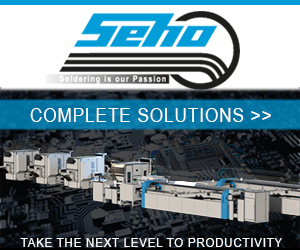“Turning Humans Into Robots”
By Michael Ford, Aegis Software
The concept of augmented reality is cool today, especially after seeing exciting examples in popular movies and TV-series of heads-up displays in action. Use of such technology in the manufacturing world may however become more ominous. Are we simply augmenting production operators in terms of their performance leading to higher productivity, or are we assigning them to a life of “digital slavery”, as they are told robotically step by step how to follow a series of tasks? We have to come up with a plan to humanize digitalization. Here is one idea.
The Digital Operator:
Augmented reality brings the opportunity of yet another digitally enabled revolution in manufacturing. The technology is at a stage where we are pretty close to a critical mass that enables practical adoption due to the development and availability of hardware as well as digital manufacturing software which is essentially just a step away. Seeing heads-up displays in cars already and consumer products such as Google glasses makes the heads-up display concept as a 2D technology very familiar. Products such as Microsoft’s “HoloLens” go a step further, to superimpose 3D virtual objects in front of what you see in the real world. Let’s assume that a solution for digital manufacturing based on a 3D device such as the HoloLens were available right now. Operators will wear the device whilst working in many, if not all, manual operations on the shop-floor. For assembly tasks, the device will replace the need for any other documentation, electronic or otherwise. Rather than a complex “operation standard” document, the operator will be shown the steps to follow, one at a time, directly by the device. The sequence would be something like showing how the production unit should be positioned initially, followed by a sequence of information showing which material to pick-up, then where and how it should be assembled. All of these shown as simple written instruction, plus a 3D image of how and where the target of the operation is found. As soon as each task is done, the device points to the next material in sequence until assembly is complete. There is a digital software driver for the operation that is responsible to manage the operation sequence, guiding and responding to the operator. The information required for this is not trivial, potentially based on 3D designs of the production unit, represented in the various stages of completion, now referred to as the “Digital Twin” as well as the materials themselves. In 2018, we would expect that pretty much all products and materials will have been originally designed in the digital environment, which creates the opportunity for that design data to be utilized in manufacturing. There is some way to go for these dynamic 3D product models to be available in a standard way, but until then, it is possible to draw simplified wire-frames, arrows and other shapes that can effectively instruct the operator. Process engineering will need to provide tools that map processes in 3D in terms of co-ordinates, for example, of the material pick-up and assembly points. In PCB assembly for many years, there have been machines that have done similar things using lasers to guide operators to pick parts from bins and insert them correctly into a circuit board. The key difference here is that we have moved from the world of 2D into 3D. As well as the Digital Twin, information from other sources can also be considered by the software driver. If, for example, a fault were detected down-stream in the process, the information could be used to create a caution message to the operator who made the mistake as they are assembling further units. A down-stream operator could also be told to confirm the work of the previous operator for a while to ensure that the defect did not appear again. Statistical and logic-based decisions will be made continuously by the software, modifying the instructions into the device. When a production cell changes from one product to make another, the operator is simply given a sequence of instructions related to the changes needed in the set-up of the work-cell, and then a new sequence of instructions.
This technology is not only aimed at assembly operators, but also material logistics, visual inspection, test, incoming quality inspection, maintenance etc. It can be applied in theory to any manual operation on the shop-floor. The limitation for adoption will be determined by the perception of cost and benefit in each case. The cost of each headset is currently quite high, with cost of ownership maintenance and charging issues to be considered. There is also the cost of the software.
The Potential Benefits:
The benefits from the augmented reality technology can be quite significant. Each operator is focused virtually 100% of the time on what they are doing. There is no distraction of having to look at documentation to see what to do next, and no need really to have to remember anything. The physical stress of having to turn and focus on documentation repetitively is eliminated. The only action other than the direct added value work, is to somehow indicate to the software that they have completed each instruction, but even this can be automated to some extent by the driver software. This makes production operators very much more productive, increasing an estimated 20% of their throughput in high volume production, and over 60% in very high-mix scenarios. In addition, through step by step guidance, operators are far less likely to make mistakes. The environment quickly becomes “zero defect”, even for assembly operators who are not experienced in the specific product assembly that they are working on, and even if product and schedule changes are continuously being made. Operator cells can also be designed to be more compact, saving production space, as the need for a monitor and associated hardware, or documentation holders is removed.
In cases where operators are interacting with automated and semi-automated machines, instead of having to walk up to fixed screens at each process, or scan the array of light towers across the shop-floor, messages are routed from all of the machines into the driver software of the responsible operator’s device, highlighting the need for attention at a process, seeing a test result or product routing issues. This reinforces the need for standard Industrial IoT interfacing from all machines and processes on the shop-floor, irrespective of vendor or machine type. Initiatives such as the IPC’s Connected Factory Exchange (CFX) are already leading the way for the ability to digitalize and share this form of information openly.
Semi-Automated Humans:
For engineering and manufacturing management, this all sounds very cool and interesting from the operational stand-point, as well as creating significant business cost reduction opportunity. From the operator perspective however, it is likely to be a little more daunting. Does anyone really look forward to the prospect of continuously following instructions from their headset, essentially cut-off from the rest of the world, with nothing to stimulate the mind? Under full workload, the production operator becomes more like an automaton, mindlessly following direction from the start of their shift to the end. We know from experience that humans do not perform well in this kind of environment. The human mind will start to “wander”, to invent its own alternate reality. Experiences may occur similar to those that people have reported when going into solitary confinement or sensory deprivation environments. This is potentially a dangerous direction.
A Way Forward:
The negative effects on the human work-force in manufacturing can be avoided using the unique opportunity that this 3D device technology offers. The level of specific experience for any operator in any specific role is eliminated with this technology. Potentially, production operators can be far more flexible, moving not only from product to product and cell to cell without productivity loss, but also, for example, assembly operators could from time to time be assigned to a material logistics role or even simple maintenance work. As our Smart factories need to become extremely flexible, it is not only machines that need to follow suit. This is a great way to achieve another level of flexibility from human operators. Manpower can be dynamically utilized exactly where needed at literally a moment’s notice. The software driver would be a software algorithm that manages work-assignments for all factory operations, on an individual by individual basis, ensuring that each person receives enough stimulation through assignment of a variety of tasks, yet also keeps them focused and productive. This would have a very positive effect on operators even compared to their conditions today, where typically they cannot move frequently from an assigned position. Increased motivation leads to faster and more effective technology adoption. The human management software algorithm takes into account training achievements and requirements, as well as the changing demands of the factory operation itself. There will be significant positive challenges for manufacturing human resources, in terms of pay, working hours, holidays, skills, performance measurement etc. and of course, for privacy issues.
Consideration of the evolution of the human production operator within the digital factory is at least as important as any other consideration. Technology need not only be used to turn people in to “machines”, but actually to free them of their constraints. The real power of humans is their flexibility. Let’s allow manufacturing digitalization to enhance that too.













